CarEdge saved me over 4,500 dollars on a brand new Honda Pilot. I can't say thank you enough.
Price intelligence
Find a wide range of vehicle listings with market insights on new and used listings near you.


Help us personalize your CarEdge experience — it only takes a second.
Your answers help us personalize your CarEdge journey — we’ll follow up with tips and next steps that match your buying timeline.

In recent years, automotive recalls have become almost commonplace. Yet, when an automotive giant like Ford faces not one, but two investigations by the National Highway Traffic Safety Administration (NHTSA) into the adequacy of their recall remedies, it warrants concern. Here’s the latest on Ford’s recall investigation, and how you can check if your car is impacted.

Back in October 2018, Ford issued a massive recall for over 1.2 million 2012-18 Ford Focus sedans. The prescribed solution was for dealers to reprogram the powertrain control module and, where necessary, replace the canister purge valve.
However, a second recall was initiated in July 2019. This covered approximately 57,000 2012-14 and 2017 Focus sedans, which, although included in the 2018 recall, did not get the intended powertrain control module update.
Now, the NHTSA is probing whether Ford’s recall solutions effectively addressed the underlying problem. Auto News reports that they’ve received 98 complaints from consumers regarding failure of the canister purge valve in the 2012-18 Focus models. Some of these vehicles had already undergone the recall remedy, whereas others had never been recalled but displayed the same defect. This has raised suspicions that Ford isn’t adequately addressing recalls. Whether this has been due to Ford’s internal policy or mere accident is up for debate.

A separate investigation is now looking into the 2018-21 Ford EcoSport vehicles. This came in the wake of 95 consumer complaints about engine failures due to a sudden loss of oil pressure. In a particularly concerning report, a vehicle owner stated the oil light came on even when the oil was full, leading to engine malfunction. This isn’t a cheap fix, either. The severity of the issue is such that it often requires a complete engine replacement.
In response to the unfolding events, Ford spokesperson Maria Buczkowski assured that Ford is actively cooperating with the NHTSA’s inquiries.
Recalls, although common, are usually decisive and efficient solutions to potential safety risks. What makes this situation exceptional is the frequency of Ford’s recalls. Not only has Ford topped the recall charts for the past three years, but 2023 alone has seen the company issue 44 recalls, affecting a staggering 4.6 million vehicles.
Is Ford’s recall a big deal? This is not the first, but the second time that Ford has faced an official NHTSA recall investigation this year. Automotive News reports that in August, the NHTSA announced that it was looking into Ford’s handling of a recall for 2022 Ford Mustang Mach-E electric SUVs. The 2022 recall was meant to address sudden power loss in 50,000 Mustang Mach E’s.
These five automakers have the most recalls in 2023:
According to new NHTSA stats, Ford issued 67 recalls in 2022. In 2022, Volkswagen had the second highest number of recalls, followed by Daimler Trucks North America and Chrysler.
With recalls being a pressing issue, one has to wonder about the root cause. Ford’s CEO, Jim Farley, has not shied away from acknowledging the elephant in the room. He’s openly admitted to quality control being a significant concern and has promised to prioritize fixing these issues. Farley has been quoted saying, “Fixing quality is my No. 1 priority,” but also cautioned that resolution will be a gradual process, spanning several years.
Perhaps having not one but two open NHTSA investigations will hasten the pace of Ford’s long-term solution for the quality control that plague the company.

We recently shared the 2023 models with the biggest price hikes. Now, we’re back with the cars and trucks with the smallest price hikes for the 2023 model year. I must say, there are some surprises here. We’ll start off by taking a look at the price trends for the 25 best-selling models in 2022. Unfortunately, Honda grabs the attention with some of the most anti-consumer price changes in recent memory.
Let’s dive in.
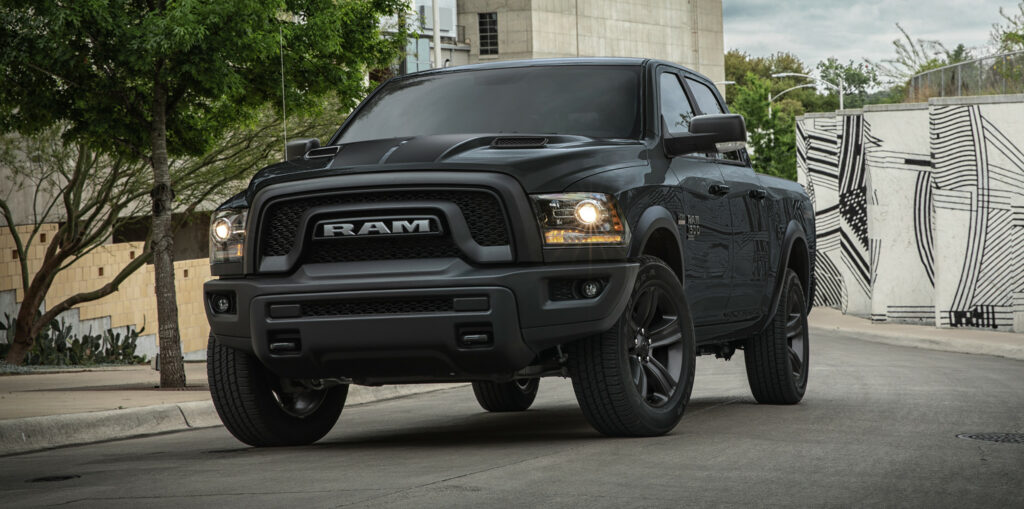
The table below shows 2023 pricing for base models and mid-spec trim options in an effort to provide more useful price comparisons. We’ve included how much the 2023 pricing has changed as a percentage.
Notice that two of the top-selling models actually have price decreases for 2023. And after years of demand outpacing supply, Tesla prices are holding steady. Still, the vast majority have MSRP increases between 3% and 10%.
America’s best-selling vehicle is now a lot more expensive. The 2023 F-150 Lariat, the popular mid-spec truck, is now $8,440 more expensive. The F-150 Limited sees a similarly huge price bump, and now tops out at $85,950. Apparently the F-150 now has Super Duty pricing. The F-150 Lightning went from a $40,000 electric truck, to a $60,000+ EV.
Update January 16th, 2023: Tesla has slashed their prices by up to 20% for some models.
What the heck is going on at Tesla? Overnight they dropped the price of the Model Y Long Range to $52,990, a full $13,000 less than its previous price of $65,990. 🤯 pic.twitter.com/EcZo6wXIiY
— Zach Shefska (@shefska) January 13, 2023
Tesla prices rose 25% from 2021 through early 2022. Now, prices haven’t changed since June 2022. In China, Tesla prices have actually fallen, leading to in-store protests from frustrated customers who bought a few days too soon. The Rear-Wheel Drive Model 3 does now qualify for up to $7,500 in federal tax credits. More on that here.
The Full Story: What’s in Store for Used Tesla Prices in 2023
It’s a frustrating trend, one that we hope Honda fans will speak out against. Honda clearly wants you to spend more in 2023. As with the CR-V, they’ve dropped the base Civic LX, effectively raising the entry-level Civic to $26,145 in 2023. It’s happening to the 2023 CR-V too. Honda eliminated the base LX trim, forcing a nearly $5,000 price increase for the entry-level CR-V.
At least Honda is offering several more options for those wanting a hybrid powertrain in 2023. The Sport, EX-L, Sport-L and Touring trims all come as hybrids. The 2023 Touring Hybrid starts at $38,985, which is $600 LESS than the 2022 Accord Touring.
Our Expectations For Car Price Trends in 2023: Car Prices Fall as Dealers Suffer
The 2023 Ford Escape gets a complete makeover, and with it comes a new trim lineup. That makes price comparisons tricky, but like for like, the 2023 Escape’s pricing remains about the same. In fact, the 2023 Escape ST-Line is $1,000 cheaper than the outgoing 2022 Escape SEL, its closest analog. Higher trims of the 2023 Ford Explorer also see steady prices.
We can’t say the same about other Ford models. The F-150 is seeing prices go up by 7% to 17% in 2023, and the all-electric F-150 Lightning now costs about $20,000 more than it was originally priced.
Toyota Corolla prices have actually gone down in 2023 for the Hybrid LE as Toyota makes way for the new hatchback Corolla. The 2023 Corolla Hatchback SE starts at $24,060 with destination fees.The Camry and Highlander also saw very minor price increases, with prices going up by about 1% across trim levels.
Altima prices nudged up slightly, but that’s no surprise. Nissan’s Altima sales have been on the decline for years now. In 2019, Nissan sold 209,000 Altimas in the U.S. In 2022, Nissan sold 140,000 Altimas in the American market.
New car prices are trending ever higher, even as supply finally catches up to demand. So, where are the best car deals in 2023? Head on over to the used car market for lower prices. Used car prices have been falling for several months, and we expect this trend to continue. Here are some CarEdge resources to get you started on your journey:
The Latest Used Car Price Update (Weekly Updates)

One year ago, the auto market was in the depths of the new car shortage. Semiconductor chips were in short supply, and dealer markups were at their worst. In December 2022, the best year-end car deals are the best we’ve seen since 2020, when the average price paid for a new car was $38,000. Today, that figure is north of $48,000. Still, end-of-year deals present an opportunity for car buyers to get a deal at a time when rising interest rates are putting affordability out of reach for many.
Check out these other CarEdge resources, updated monthly:
The Best Auto Loan Rates This Month
The Best Lease Offers This Month
CarEdge Member Favorite: Car Buying Cheat Sheet
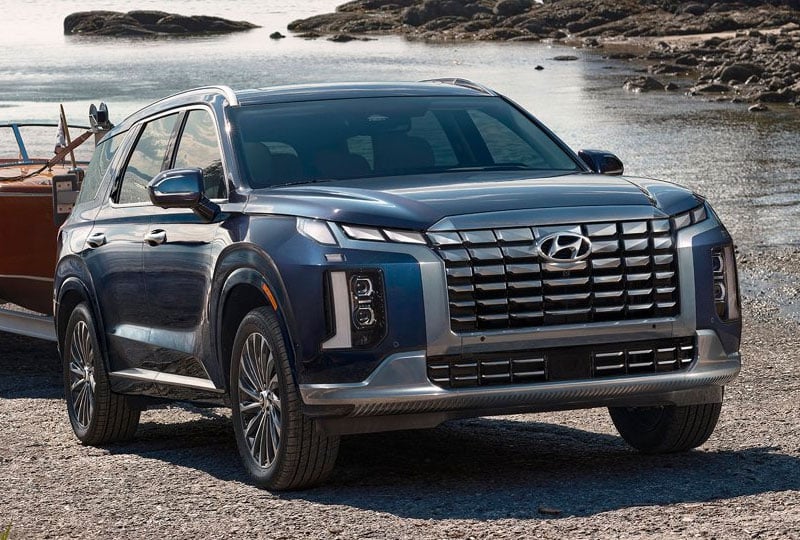
In December, Ford is advertising 3.9% APR for 60 months for select models:
See new and used Ford listings near you.
1.9% APR for 24 – 48 months
2.9% APR for 24 – 48 months
In December, Hyundai has a great financing deal at 0% APR for 36 months for the following models:
See Hyundai listings near you.
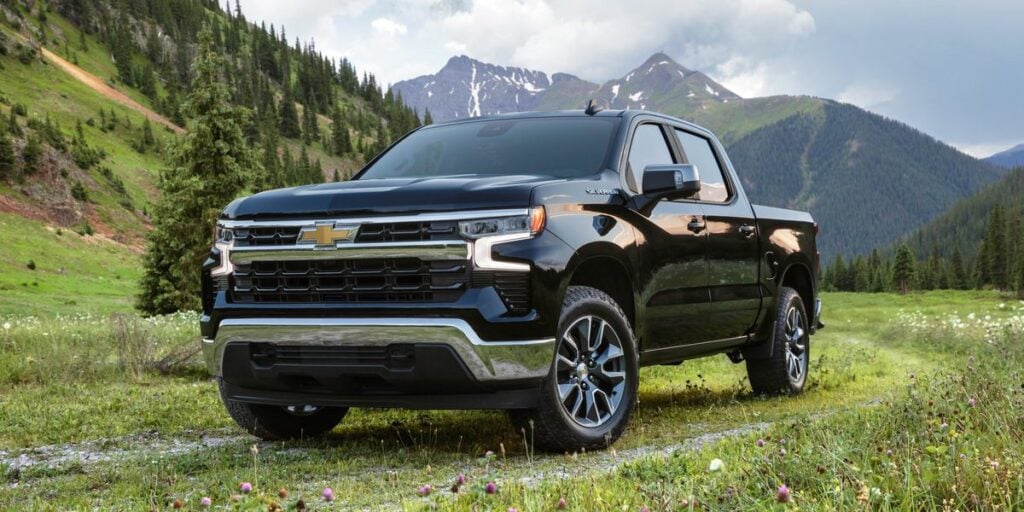
Chevrolet Equinox: $239 per month for 24 months with $2,289 due at signing
Chevrolet Blazer: $249 per month for 24 months with $2,709 due at signing
Chevrolet Colorado: $319 per month for 36 months with $4,149 due at signing
Chevrolet Silverado 1500 Crew Cab 4WD LT: $399 for 36 months with $3,949 due at signing
See current lease offer details from Chevrolet.
Hyundai Venue: $151/month with $3,281 due at signing
Hyundai Elantra: $229/month with $3,279 due at signing
Hyundai Kona: $209/month with $3,934 due at signing
Hyundai Santa Fe: $269 per month with $4,919 due at signing
Hyundai Kona Electric: $264 per month with $3,984 due at signing
Hyundai Palisade: $339 per month with $5,539 due at signing
See current lease offer details from Hyundai.
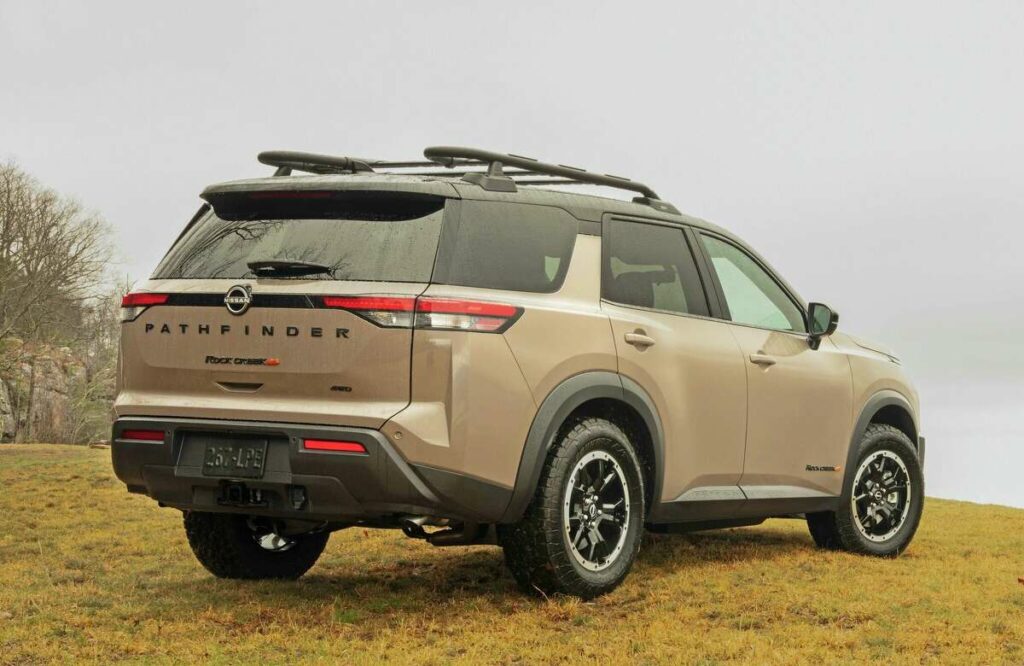
Nissan Frontier: $299 per month for 18 months with $1,709 due
Nissan Rogue (AWD): $359 per month for 36 months with $2,789 due
Nissan Murano (FWD): $329/month for 24 months with $3,549 due
Nissan Pathfinder (4WD): $469/month for 24 months with $3,959 due
See Nissan end-of-year car deals at nissanusa.com
Subaru Legacy (Premium): $269 per month for 36 months with $3,219 due at signing
Subaru Ascent: $329 per month for 36 months with $3,829 due at signing
Subaru Outback Premium: $345 per month for 36 months with $3,515 due
See Subaru end-of-year lease deals at subaru.com

Dodge is offering the best cash incentives in December as they try to clear out 2022 model-year vehicles.
$4,000 cash allowance for Ram 1500
$4,500 cash allowance for the Durango
$1,500 cash allowance for the Charger and Challenger
No payments for 90 days with Dodge financing.
$2,000 lease cash for select RX styles.
See Lexus cash offer details at lexus.com
Would a car buying coach make this whole process easier for you? CarEdge is changing car buying for the better. This is LONG overdue, isn’t it? Check out hundreds of free resources, or learn more about how CarEdge can help you negotiate a better deal today.

Interest rates are rising, and inflation is at record highs, but deals can still be had when buying a new car. Every month, the team at CarEdge pores over the latest offers from every automaker. The result is a one-stop resource to share the very best new car deals with you.
Not finding what you’re looking for? We’ve included links to each automaker’s website. Check back frequently, as this living page will be updated regularly.
Check out these other CarEdge car buying resources:
The Best Auto Loan Rates Right Now
The Best Lease Deals This Months
These 5 Brands Are Negotiable Right Now
Finance Buick SUVs (Encore, Envision, Enclave) at 3.99% APR for 72 months.
Buick Encore: $179 per month for 24 months with $5,449 due at signing
Buick Envision: $279 per month for 24 months with $3,739 due at signing
Cadillac CT4: $439 per month for 36 months with $3,749 due
Cadillac XT4: $379 per month for 36 months with $3,579 due at signing
See Cadillac listings near you.
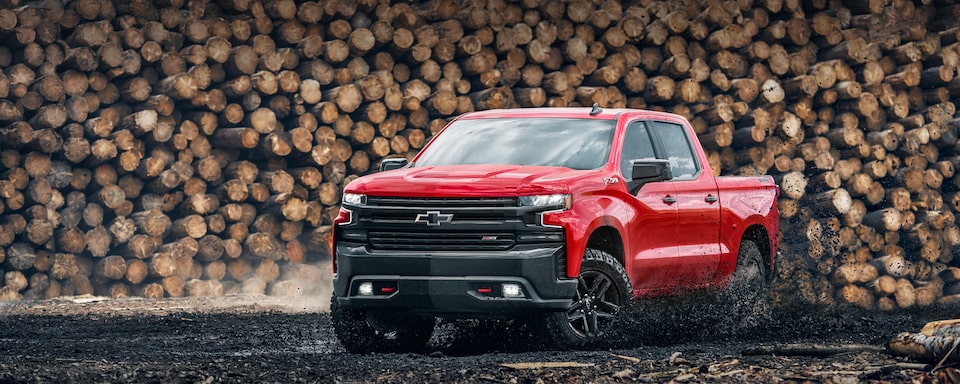
Best Chevrolet financing offer:
2.99% APR for 60 months for the Silverado 1500, Colorado and Equinox.
Chevrolet lease deals:
Chevrolet Trailblazer: $259 per month for 24 months with $3,109 due at signing
Chevrolet Blazer: $279 per month for 24 months with $2,369 due at signing
Silverado 1500 Crew Cab 4WD LT: $399 for 36 months with $3,579 due at signing
See details on Chevrolet deals.
Chrysler Pacifica Hybrid: $599 per month for 39 months with $5,499 due at signing
See details on Chrysler deals.

In February, Ford is advertising 3.9% APR for 60 months for select models
Learn more about Ford deals at Ford.com.
Best GMC financing offer:
2.99% APR for the GMC Sierra 1500
3.9% APR for the GMC Terrain
GMC lease offers:
GMC Acadia: $289 per month for 24 months with $2,309 due at signing
GMC Terrain: $279 per month for 24 months with $3,949 due at signing
Best Honda financing offers:
Honda Pilot, Passport, Ridgeline: 1.9% APR for 24 – 48 months
Best Honda lease offers:
Honda Civic: $269 per month for 36 months with $3,399 due
Honda CR-V: $349 per month for 36 months with $4,499 due

Hyundai lease offers this month are good, but the amount due at signing has increased this month.
Hyundai Venue: $151 per month with $3,281 due
Hyundai Elantra: $219 per month with $3,299 due
Hyundai Kona: $209 per month with $3,999 due
Hyundai Tucson: $279 per month with $3,999 due
Hyundai Santa Fe: $269 per month with $3,999 due
See details on Hyundai lease and finance deals.
Jeep leases are attractive in February.
Jeep Wrangler: $409 per month for 42 months with $5,099 due at signing
Jeep Compass: $347 per month for 42 months with $3,799 due at signing
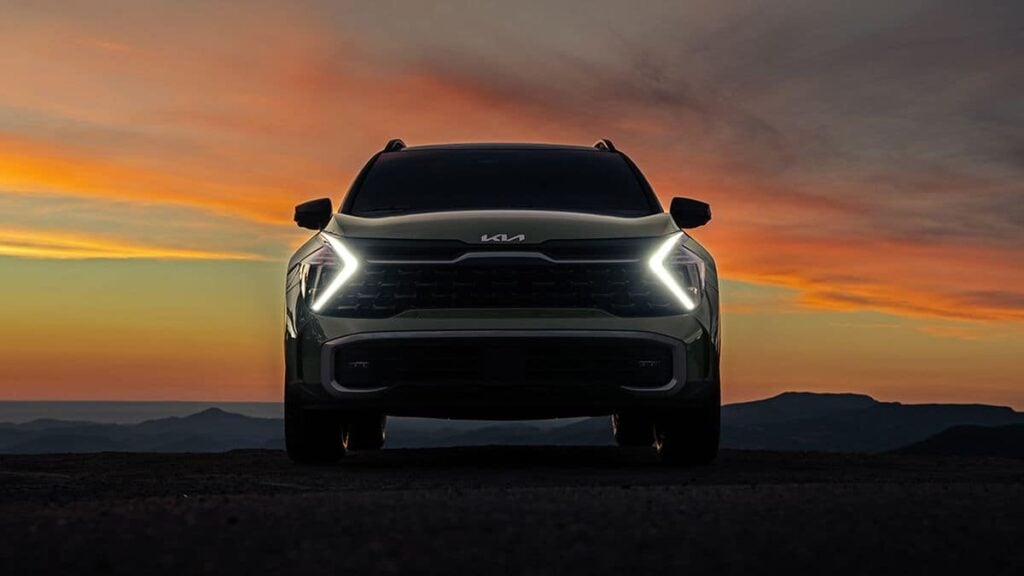
Best Kia financing offer:
2.9% APR for 48 months
Kia Forte
Kia Sorento (2022)
Kia Soul
Best Kia lease offers:
Kia Sportage: $279/month for 36 months with $3,499 due
Kia Seltos: $249/month for 36 months with $3,320 due
See details on Kia deals at Kia.com.
3.49% APR for 48 months for the RX.
$2,000 lease cash for select RX styles.
ES 250 AWD: $509/month for 39 months with $3,999 due
See details on Lexus deals at lexus.com.
Best Mazda financing offer:
2.49% APR for 36 months + NO payments for 90 days
Best Mazda lease offers:
Mazda CX-30: $239 per month for 24 months with $2,999 due at signing.
Mazda CX-5: $299 per month for 33 months with $3,499 due at signing.
See details on Mazda deals at Mazdausa.com.
0.0% APR for 36 months
1.9% APR for 36 months
Nissan Altima: $199 per month for 18 months with $2,309 due
Nissan Leaf: $269 per month for 36 months with $5,259 due
Nissan Rogue (AWD): $299 per month for 36 months with $3,459 due Nissan Murano (FWD): $299/month for 24 months with $2,099 due
Learn more about Nissan deals here.

4.9% APR for 72 months and no payments for 90 days for the Ram 1500 and Ram 2500
$4,000 cash allowance for Ram 1500
Lease: Ram 1500: $309/month for 42 months, $5,499 due
Learn more about Ram deals at Ramtrucks.com.
Best Subaru financing offers:
2.9% – 3.9% APR for 48 months for these models:
The best Subaru leases:
Subaru Outback: $345 per month for 36 months with $3,515 due
Subaru Ascent: $359 per month for 36 months with $3,259 due
Best Toyota financing offers:
2.99% APR for 60 months
3.49% APR for 48 months
Toyota Corolla Cross: $331 per month for 39 months with $2,976 due
Toyota RAV4: $413 per month for 36 months with $3,063 due
Toyota Highlander: $393 per month for 39 months with $4,053 due
Learn more about Toyota deals here.
With interest rates rising and inflation putting pressure on automakers and their dealer networks, the only thing that could bring better new car deals would be plummeting demand. We’ve seen signs of weakening demand and higher new car inventory, but nothing considered drastic. Expect auto loan interest rates to climb in 2023. The best car deals in February won’t last.
These are the 5 car brands you CAN negotiate right now!
Thinking about factory ordering? These are the latest wait times our community is reporting.
These are the most marked-up new cars in 2022
Looking for something else? Visit our blog, or consult 1:1 with a real CarEdge Auto Expert to get customized help with your car deal. It could save you thousands!

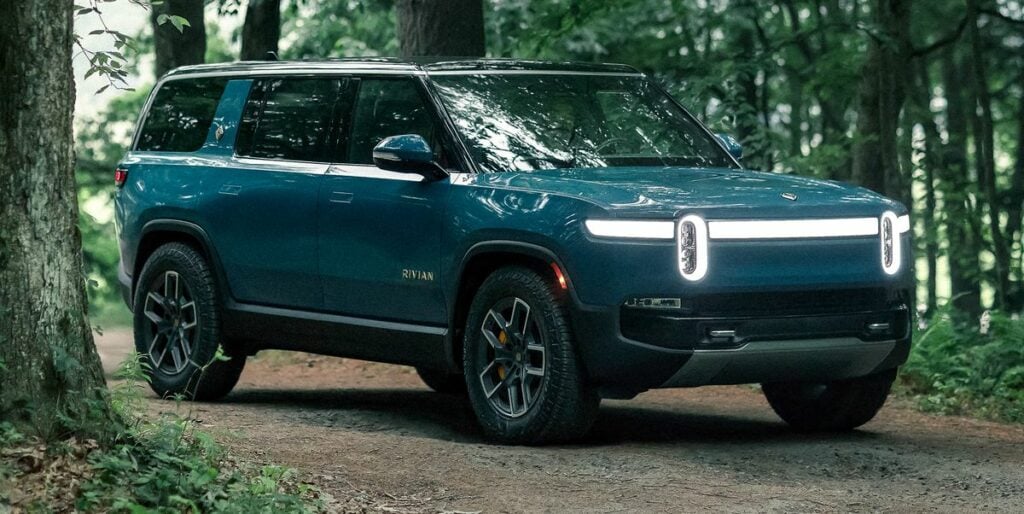
If you’re thinking about hauling the kids off to school with zero emissions, today’s EVs offer more range, faster charging and greater fuel savings. The best electric cars and SUVs for families are available in a wide range of options to meet your needs, and an even wider range of price points. These are the best electric crossovers and SUVs on sale in 2024.
If you need space for four, five, or maybe six people (plus those furry friends), these 3-row electric SUVs are built for you.

Reviewers absolutely LOVE the new Kia EV9. As the first mainstream 3-row electric SUV to hit the American market, the EV9 was highly anticipated. We can confirm that it has been worth the wait. Step inside this full-size SUV, and you’ll immediately note the spaciousness and luxurious feel of this premium-feeling Kia. This one is worth a test drive.
Price: $56,395 – $75,395
Range: 230 – 304 miles
Charging (public fast charger): can add 200 miles in 18 minutes
Passenger volume: 159 cubic feet (three rows, seats 6)
Cargo volume behind second row: 44 cubic feet
Total cargo volume: 82 cubic feet
NHTSA safety rating: Not Rated (5-Star Euro Rating)
See Kia EV9 new and used listings with local market data.

Rivian is just beginning to ramp up production and sales of the Rivian R1S, the full-size electric SUV companion to the R1T electric truck. The 2024 Rivian R1S is a blend of luxury and off-road capability. This 3-row EV is made in America, at a converted manufacturing facility in Normal, Illinois. We can only recommend this great vehicle if you live within a reasonable distance of one of Rivian’s service centers. If you end up needing service, you don’t want to pay for a long-distance tow truck!
Price: Starting at $74,900
Range: 316 miles
Charging (Public fast charger): can add 140 miles in 20 minutes
Passenger volume: (three-row SUV)
Cargo volume behind second row: 46.7 cubic feet
Total cargo volume: 104.7 cubic feet
Safety rating: Top Safety Pick+ by IIHS
Learn more about the Rivian R1S.
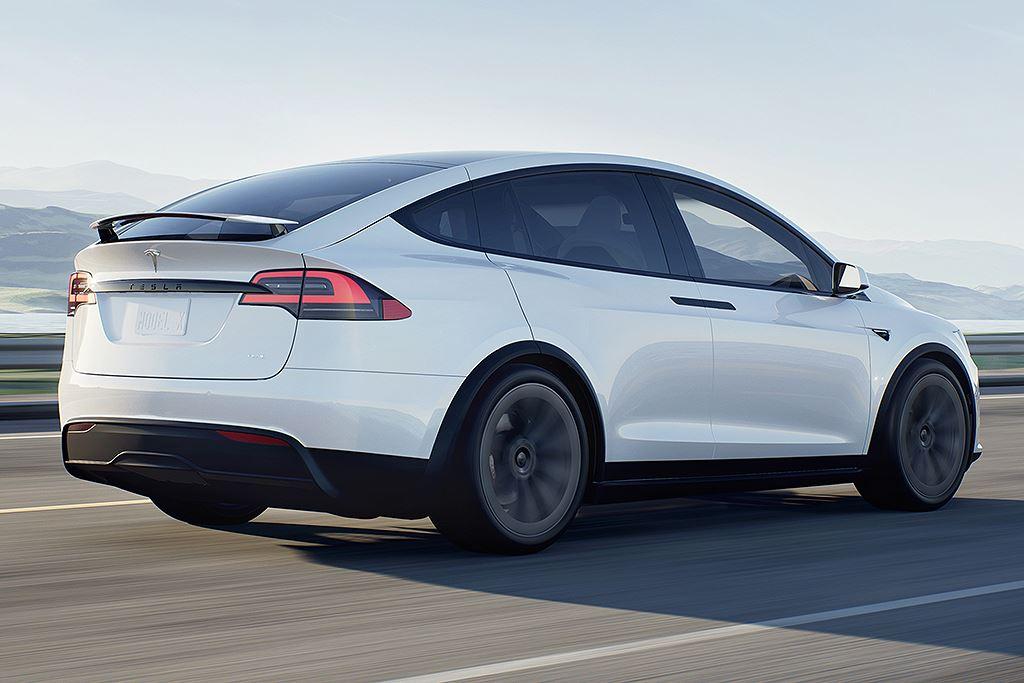
With gull-wing doors and a massive glass roof, there’s no hiding the fact that the Tesla Model X is a luxury SUV. In 2024, the Model X has seen multiple price cuts, and now starts around $80,000.
Price: $79,990 to $120,000+
Range: 351 miles
Charging (Public fast charger): can add 200 miles in 15 minutes
Passenger volume: N/A (three rows)
Cargo volume behind second row: 42.5 cubic feet
Total cargo volume: 92.3 cubic feet
Safety rating: 5 stars from Euro NCAP
See Tesla Model X new and used listings.
These electric crossover SUVs are the highest-rated, most-loved EVs for families today. Although they lack a third row, they’re plenty big enough for most families of four. Spaciousness, pricing, range and charging speeds vary from one electric model to another. We’ve also included NHTSA safety ratings if they’re available.

The Model Y is the best-selling electric vehicle in America. Model Y prices have fallen 20% from 2022’s highs. It’s now possible to buy a Model Y for well below $50,000 with the point-of-sale EV tax credit. Although it’s known for autonomous driving, the full capability (known as FSD) is a $15,000 package.
Price: $49,990 to $74,990
Range: 279 to 330 miles
Charging (Public fast charger): can add 200 miles in 15 minutes
Passenger volume: 106 cubic feet
Cargo volume behind second row: 26.6 cubic feet
Total cargo volume: 72 cubic feet
NHTSA safety rating: 5 stars
See Model Y new and used listings.
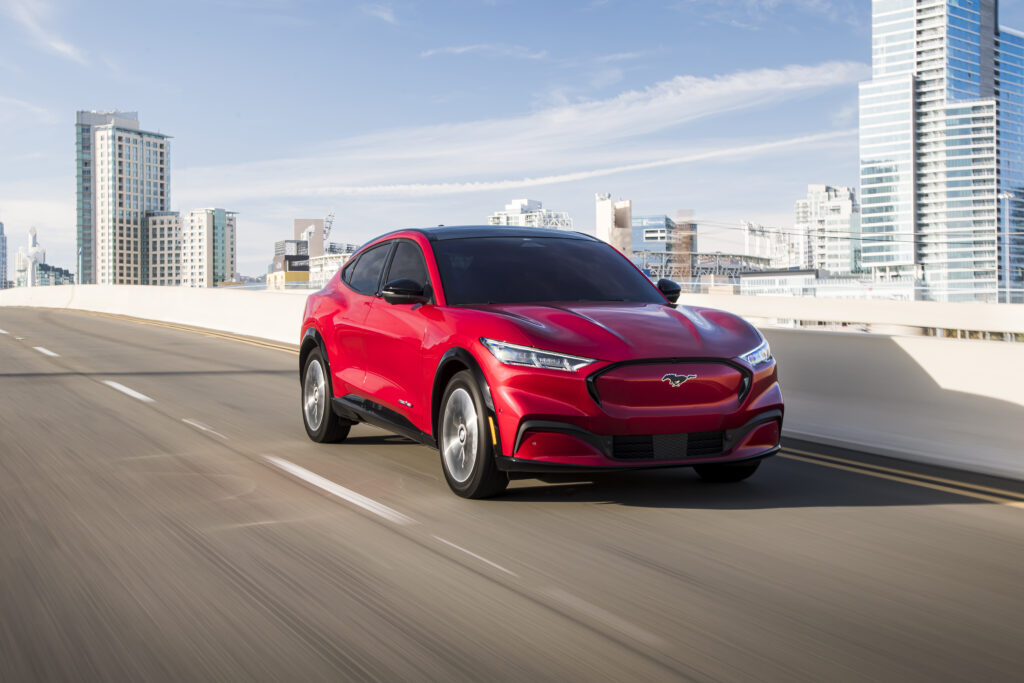
Ford’s first serious EV is very popular among small families and speed freaks alike. If the Mustang brand has a special place in your heart, this just might be the EV for you.
Price: $45,995 to $63,575+
Range: 224 to 312 miles of range
Charging (Public fast charger): can add 120 miles in 20 minutes
Passenger volume: 104.5 cubic feet
Cargo volume behind second row: 29.7 cubic feet
Total cargo volume: 59.7 cubic feet
Safety rating: IIHS Top Safety Pick
See Mustang Mach-E new and used listings.

I can confidently say that the IONIQ 5 is a great family car, and that’s because my wife and I haul our own kiddo around in this segment-bending electric crossover with hot hatch flavors. The IONIQ 5 has won many awards, including Car and Driver’s 2022 EV of the Year. It charges VERY fast, and that’s what I love most about the car.
Price: $40,925 to $57,400+
Range: 220 to 303 miles
Charging (Public fast charger): Adds 200 miles of range in 20 minutes
Passenger volume: 106.5 cubic feet
Cargo volume behind second row: 27.2 cubic feet
Total cargo volume: 59.3 cubic feet
Safety rating: Top Safety Pick Plus from IIHS
See Hyundai IONIQ 5 new and used listings.
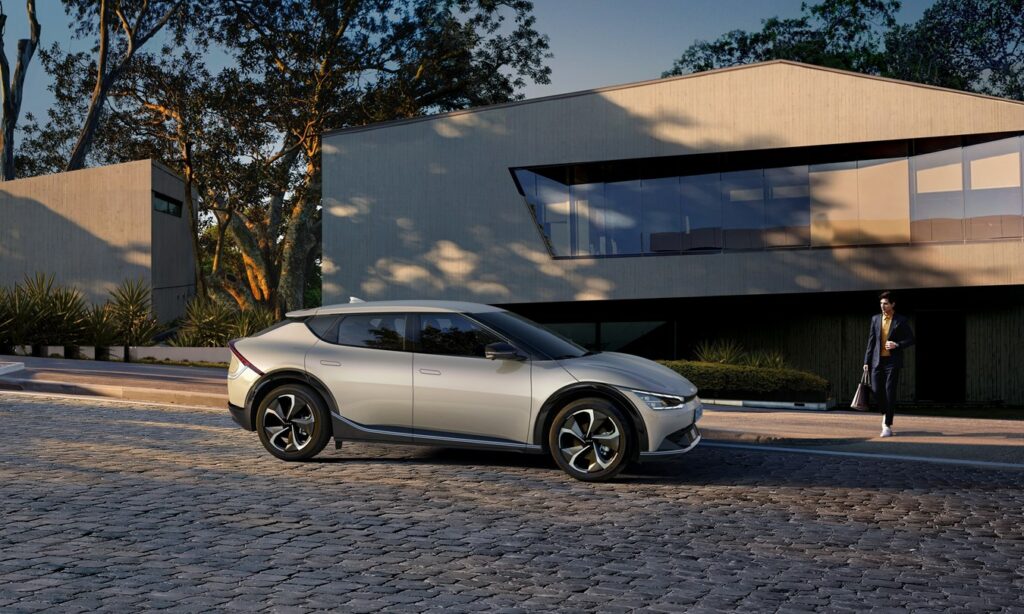
The spaceship-styled EV6 is Kia’s version of the Hyundai IONIQ 5, which shares the e-GMP electric powertrain. The Kia EV6 has slightly less passenger and cargo space than the Hyundai, but it’s better range and equally fast charging make it an obvious feature on this list of best electric cars for families.
One thing to bear in mind: most EVs, including the EV6 and IONIQ 5, have a flat floor, meaning that there’s a bit more interior space than it would appear. The best thing you can do is check one out in person!
Price: $43,920 to $61,600+
Range: 274 to 310 miles
Charging (Public fast charger): Adds 200 miles of range in 20 minutes
Passenger volume: 103 cubic feet
Cargo volume behind second row: 24.4 cubic feet
Total cargo volume: 50.2 cubic feet
Safety rating: In Europe, the EV6 earned 5 stars
See Kia EV6 new and used listings.
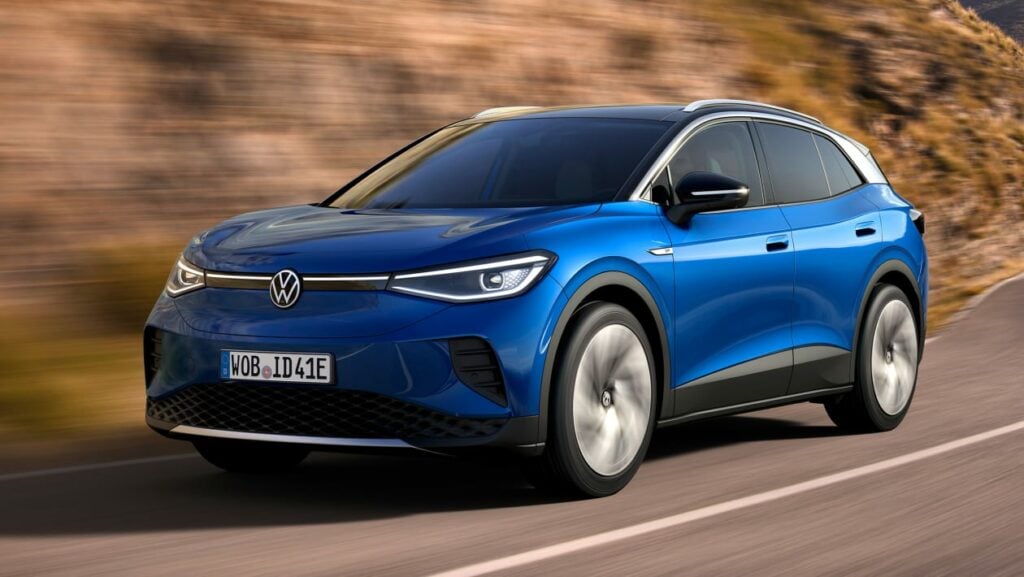
We have great news for those in search of an affordable and capable EV that qualifies for the federal tax credit. The ID.4 is now made in Tennessee at Volkswagen’s Chattanooga plant! The newest American-made EV is equipped with decent range, okay charging, and a comfortable interior that’s designed for families. However, don’t expect Tesla-level infotainment. The ID.4 is best for those who are content with the simpler things in life.
Charging speeds are merely okay, but the 2024 model year gets a decent improvement.
Price: $38,790 to $55,000
Range: 208 to 275 miles
Charging (Public fast charger): Adds up to 190 miles of range in 30 minutes
Passenger volume: 99.9 cubic feet
Cargo volume behind second row: 30.3 cubic feet
Total cargo volume: 64.2 cubic feet
Safety rating: Top Safety Pick Plus
See Volkswagen ID.4 new and used listings.
The Inflation Reduction Act eliminated the original EV tax credit and replaced it with a completely revised tax credit. For vehicles that qualify, up to $7,500 in tax credits are available. However, the incentive is based on battery sourcing, which will be determined by the automakers. Income limits restrict buyer eligibility, too. See the full details on qualifying models here.
There’s also a used EV tax credit for the first time, but a price cap of $25,000 eliminates every single family EV on this list.
Generous state and local incentives may make the switch to an EV much more affordable, depending on where you live. See the most generous state-level EV incentives, and check with the DSIRE clean energy incentive database to find more incentives for your specific location.
Which family-size electric car are you considering? Let us know in the comments, or better yet join the conversation at our CarEdge Community forum.